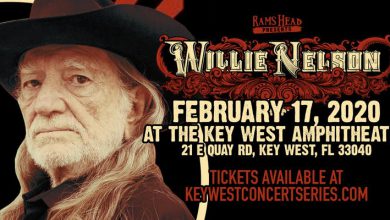ABC DISCOVERY ’70 ‘Discovery Goes to Key West’ with Bill Owen and Virginia Gibson
Stately white homes, palm tree-lined streets, ships waiting in the harbor (0:09); “Discovery Goes to Key West” (0:37) in this episode of Discovery ’70 (0:57), the award-winning program for young people produced hosted by Bill Owen and Virginia Gibson.
Gibson and Owen stand at the end of U.S. Highway 1 that starts in Fort Kent, Maine, and ends in Key West, Florida (1:06). Cars pass; the camera zooms in on an “END” sign (1:41). The highway was once a railroad. Old photos show the former railroad (1:46), its steam train (1:50), workers and equipment (1:55), and Henry Flagler, the man who inaugurated the project (2:15). The train crosses the sea (2:28).
Pirates like Black Cesar (2:43) and Henry Morgan (2:47) preyed on sunken ships near Key West (2:51). A ship sinks, its men struggle onshore (2:57). An overhead illustration of the town (3:22). John Simonton purchased Key West from a Spaniard in 1822. Men in horse-drawn carriages (3:33), and on the porch of a Johnson’s drugstore (3:38).
Key West homes (3:42) were often built of cypress or madera mahogany. A car turns on Duval Street (3:58). The U.S. Naval Station (4:06), there since 1823, helped disperse the pirates. Men load and unload large buckets of shrimp (4:19). Trawlers in the harbor (4:41). They use large black nets (4:53), and continue unloading their catch. A close-up of their shrimp (5:18). A man sorts lobster (5:25); more lobster brought up in a trap (5:43). Large birds sit atop a display of fish (5:51), as sport fishermen look on. Charter boats go out to stalk giant marlin, tarpon, sailfish, and smaller varieties too. There hangs even one shark (6:12). People take a good look at the shark (6:19). A young boy touches its rough skin (6:26).
Fishermen comprise an important segment of the tourists there. Tourists ride the Conch Train (6:36), which goes by the island’s attractions and historical sites. Of these are Civil War-era fortification constructions, such as West Martello Tower (7:09), and Fort Jefferson, a six-sided fort on Garden Key, one of the Dry Tortugas islands (7:19). They were named by Ponce de Leon, who found sea turtles on their beaches. A lighthouse, the Garden Key Light (7:50). Fort Jefferson’s long-range cannons (8:45).
Footage shows the astounding engineering of the fort (9:02). It was the most ambitious project attempted at the time by the Corps of the United States Engineers. During the Civil War, Fort Jefferson was used as a prison. Sergeant Harrison Herrick, of the 110th New York Volunteers, kept a diary describing life there. Black-and-white visuals accompany the diary excerpts: illustration of the fort and a ship (12:09); grainy photo of the American flag (12:18); line drawings of mustached soldiers (12:26); illustrations of soldiers next to cannons (12:54); a soldier reads a letter (13:02); men gathered around a newspaper (13:12); they rejoice at the news of General Lee’s capture (13:21); soldiers fire cannons to celebrate the victory (13:26). Illustrations show John Wilkes Booth assassinating President Abraham Lincoln at Ford’s Theater in Washington, D.C., and fleeing on horseback (14:05).
Dr. Samuel A. Mudd (14:31) was arrested for treating Booth, and spent four years there (14:43). He was pardoned in 1869. Today, Fort Jefferson is no longer a prison, but is part of Dry Tortugas National Park.
Virginia stands in front of the Audubon House, which contains works by John James Audubon, famous ornithologist and painter of birds (15:20). His beautiful paintings at 15:48. Mario Sanchez (16:06) uses a mallet to chisel into his woodcut art (16:14). His childhood experiences in Key West provide the subjects for his works, which portray colorful funerals with large marching bands (17:56);
dancing and drumming in the street (18:32); goats pulling people in carts like horses (18:58); and his father reading books to cigar makers (19:13). Key West used to be the cigar capital in the world, but today the industry has gone. Two elderly cigar makers work in a small shop, once called “buckeyes” (19:52).
Discovery is an American television program, produced by ABC News, that was geared towards children and teenagers. The program began on October 1, 1962 as a weekday afternoon series. In September 1963, the show was moved to midday Sunday, and remained there until it was canceled in September 1971.[1] [source: Wikipedia]


